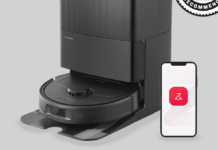Last week the White House unveiled the flag for the new branch of the US military, the Space Force. But wait! There’s more: The president also said the US is developing a new “super-duper missile” that will be 17 times faster than the ones we have today.
I don’t know everything there is to know about rockets and missiles, but I do know basic physics. And I’ll be honest, this seems crazy. For comparison, among current missiles, the UGM-133 Trident II might be the speediest. It’s a submarine-based missile that hits about 8.06 kilometers per second (18,000 mph for you imperial unit people). Yes, that’s already insanely fast.
So what if you raise that by a factor of 17? That means a super-duper missile would have a velocity of 137 kilometers per second. That’s about 400 times the speed of sound—Mach 400. It could travel across the country, coast to coast, in 30 seconds. Is that even possible? Let’s do an estimation to see what it would take.
Reality Check
No details were offered, but I assume we’re talking about a ballistic missile here. Unlike a cruise missile, which is propelled by a jet engine over its entire flight, a ballistic missile uses a rocket engine to reach much higher speeds. But the rocket only burns for a few minutes. After the initial boost phase, it’s basically an unpowered projectile, like a bullet, moving in an arc-like trajectory under the influence of gravity.
Also, we can safely assume it travels at an altitude where there is very little air. I just don’t think anything can go 137 km/s in the atmosphere—the air drag forces would be too great. If you look at the missiles that clearly only travel in the atmosphere, the MIM-104 Patriot is the fastest with a speed of Mach 5. So if we want a super-duper fast missile, it’s going to have to be in space.
Actually, we really only need two things to model this new fast missile. The first is a better name. I’m not going to keep calling it the super-duper missile—that’s silly. Instead, inspired by the Trident II, I’m going to call it the Zoom Spear I.
Second, we need a mass. This is tougher than the name, because most of the mass of a missile is in the fuel. If you want a missile to go faster, you need more fuel, which will increase the mass. On most rockets, the payload is just 2 to 5 percent of the total mass of the vehicle; that’s called the payload fraction. Let’s say the Trident II has a mass of 59,000 kg with a payload fraction of 5 percent. This puts the payload at about 3,000 kg. (That might be high, but just stick with me.) That’s the part I want to get going really fast.
If you have a payload moving at 8.06 km/s like the Trident II, it requires energy to get it that fast. We can calculate this as the kinetic energy—a quantity that depends on both the mass and the velocity of the payload.








